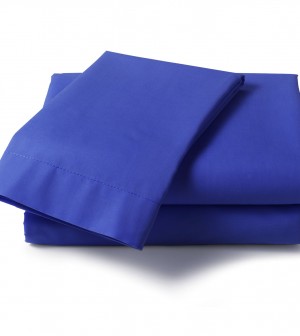- Belgium comes to Yamashita Park
- Residential Villa in Phuket Entices Remote Workers With Long-Stay Rates
- Rare pieces of French glass art at the Mirai Museum of Art
- Feast on fresh fish and seafood at the 2024 ‘Sakana’ Festival
- Would you like to ride in a Louis Vuitton gondola lift?
- Naked Snow Aquarium
- Festive lights at Yomiuriland will get you feeling the holiday vibes
Healing the blues

The world is a colourful place – flowers are a prime example of the glorious array of hues that are possible – yet the average home has a limited number of tones. Each colour can relate to specific emotional and behavioural responses, often quite different from what we have been told or what is culturally believed. If we wish to live a full-frequency life, it is important to have a variety of colours in the home, while paying heed to some potentially misguided use of colours. Perhaps the most important space to be mindful of colours is the bedroom, where we move from a conscious state to an unconscious one in which we are more receptive to the messages around us.
I cannot stress enough the importance of being careful with the use of the colour blue in the bedroom. While it is often spoken of being a ‘calming’ colour and is stereotypically associated with boys, blue should not be used as a primary colour in a bedroom, where its watery quality can leave one feeling swamped both physically and emotionally. Being surrounded by watery-toned sheets, curtains, and/or walls can lead to finding it difficult just to stay at the surface of things in your life, let alone to get moving. (And if you’re looking to have things get hot in the bedroom, setting the tone with such a cool colour means you’ll have to work that much harder to heat things up in there!)
In over a decade of practice, I have yet to meet someone with these colours in the bedroom who was not feeling slowed down, tired, emotionally confused, consistently sad, or depressed – they quite literally have ‘the blues.’ One client in a workshop spoke of how she was hospitalized for depression for three months; when released, she walked into her bedroom and immediately realized that the blue walls, curtains, and bedsheets needed to go. A friend’s seven-year-old son, whose bedroom had blue curtains and bedding, as well as other black features, was asking questions of a depth beyond his years, moaning ‘Why am I alive? I didn’t ask to be born…‘ A friend recently wrote on Facebook about feeling more depressed than she’d ever been; when I messaged her privately to ask about her bedroom colours, she stated she had blue curtains, blue sheets, and a black comforter; she changed them immediately and the following day was already feeling better. If you have any of these items – get rid of them. Perhaps the material can be recycled in a better way – a table cloth or table mats…or rags for cleaning the floor.
I have come across a remarkable degree of resistance from some clients who have these cool, depressing tones in their bedrooms. They tend to emphasize how much they like the colour while simultaneously complaining the symptoms I explain it can cause. If someone is adamant about the use of a colour, it’s not about the colour but what it represents. Blue relates strongly to emotion, so if there are issues about not being heard or not being able to articulate one’s feelings, the presence of that colour can seem validating because the emotion is, in a sense, visible in the environment; consequently, removing it would seem to invalidate their emotional experience. Teenage boys in particular, who haven’t developed the skill (or likely been encouraged) to express their feelings might be particularly resistant to changing the colour that outpictures the depth of their emotional range. If agreement is challenging, work towards step-by-step tonal shifts that move away from blue – one pillow or comforter at a time.
This does not mean to avoid the use of blue altogether, or to go to the other extreme and paint your room all red (that could potentially lead to so much passion that anger can light up). Blue accents are wonderful: a bowl or object, the sky or water in a well-placed painting or photograph (avoid too much watery art in the bedroom, though), can bring a fresh clarity to a space. However, mood-setting colours through which light is filtered (like curtains) or against which your skin is placed (like bedsheets) are best kept neutral to warm. Light earthy tones (including yellows), pastels, and the softer red spectrum can keep things warm and stable without overheating, accentuating the warmth of your complection and helping you look your best. Green tones on the walls or sheets, by contrast, highlight your veins and make you look seasick. (Some shades of green on walls – like sage – can look nice, but they’re best avoided in bedrooms and require good lighting and other warm tones to balance them out.) I’ve seen introverted teens become more outgoing and socially balanced as they phased out darker tones and embraced softer, warmer colours. (If you exchange the words ‘tones’ and ‘colours’ for ‘emotions’ and ‘moods’, that last sentence really makes sense, doesn’t it?)
Don’t assume you need dark colours to help you sleep better – turning out the lights and having good blinds will take care of that. Keep your bedroom surroundings neutral to warm in tone, and you’ll find yourself more likely to sleep well and feel refreshed.
May your bedroom nurture and support your warmth and well-being.














